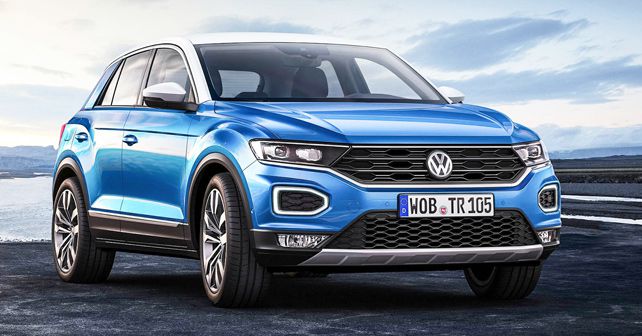
The German auto industry is not experiencing good times. It’s shaken by relentless hammering from politicians and the media on the “diesel scandal” – and the (alleged) failure to anticipate their wish for electric vehicles.
Nevertheless, there’s no shortage of new models – but they’re not always what you might expect. In the past month, I drove an array of vastly different German cars that provided valuable insights into the direction their respective brands are heading in.
Volkswagen: Tiguan Allspace and T-Roc
The Ferdinand Piëch era is well and truly over at Volkswagen. The once all-powerful co-owner, Ferdinand Porsche’s grandson, had set the VW brand on track to attack Mercedes-Benz. Results included the fourth-generation Golf, the Passat B5, the Touareg and the Phaeton. Even mainstream models were fitted with premium materials far surpassing segment standards and setting new benchmarks.
“Top of volume” is where VW wants to be now, probably a more natural fit than “premium” but a far less ambitious one. It shows in new vehicles like the T-Roc and the Tiguan Allspace. That super-rich feel is gone, but the cars look more youthful and edgy. One thing hasn’t changed – precision in engineering. Fit-and-finish is exemplary, the engines are smooth and responsive, and the steering and handling is agile. They still know how to make great cars in Wolfsburg, but now they’re now learning to do it more cheaply.
The T-Roc, by the way, might be the brand’s most important model these days. It’s sized like a Golf, but it competes in a vastly growing segment. Compact crossovers are the global rage – and this Volkswagen might well be the best of the lot.
BMW: 6 Series Gran Turismo and X3
If you want to know why the successor to the 6 Series Coupe will be called the 8 Series, the answer lies in the 6 Series Gran Turismo – successor to the controversial 5 Series Gran Turismo. BMW has managed to make it even bigger inside – while significantly improving its looks. This BMW is still no beauty, but it looks sportier and more contemporary than before. Some of the predecessor’s expensive and unappreciated quirks have disappeared – the divided tailgate is gone, and so is the partition between the rear seats and the trunk.
At the same event, I drove the third-generation X3, an SUV that – unlike the 6 Series GT – follows precisely the same formula that turned its predecessor into a huge success. It’s versatile, spacious and sporty. Both the 6 Series GT and the X3 were fitted with the same 3.0-litre straight-six engine, and I was startled by how differently tuned these two vehicles are. The steering in the 6 Series is the lightest I’ve ever experienced in a BMW, while the X3 feels artificially heavy. The 6 Series is muted, while the X3 makes a show of its engine and exhaust sound. One thing is shared by both – an approach to cockpit and interior design that’s starting to look rather dated.
Daimler: Mercedes-AMG GT and Mercedes-Benz X-Class
The AMG GT is one of the boldest vehicles on the market. It’s a sports car on steroids – incredibly fast and loud, and a symbol of the self-confidence prevailing in Stuttgart and Affalterbach these days.It was as much fun to drive the GT R on the super-challenging Bilster Berg racetrack as it was flogging the new GT C Roadster on the low-traffic roads in the hills around Bielefeld and Parderborn. This car is a continued challenge to the Porsche 911.
Another Mercedes-Benz is on the same side of the spectrum of the fun scale, but on the opposite side when it comes to utility is the X-Class pickup – derived from the Nissan Navara, but vastly more refined and available with a Mercedes-developed V6 turbo-diesel. I like the X-Class, but maybe Daimler should turn down the rhetoric. This is not “the first and only premium pickup” on the market.
Porsche and Audi: Cayenne and A7
Porsche and Audi had a challenge on their hands with the replacement for the Cayenne and the A7 – both cars are almost iconic, technologically advanced and unique in style.
The Cayenne keeps the face and proportions of the predecessor, with a more futuristic rear end. Under the skin, everything is new. The third generation is based on the modular-longitudinal Audi MLB architecture, and is thus much lighter and more advanced than before. Unfortunately, there’s a huge gap in the engine portfolio. Porsche refuses to commit to the diesel, even though both the V6 TDI and V8 TDI versions are ready for the market. We would imagine that the competition can barely conceal its glee.
Audi unveiled the new A7 at a static launch in Ingolstadt. No one has driven it yet, but I think it’s a triumph of Marc Lichte’s new design strategy – contemporary and stunningly beautiful, Lichte’s team have gotten it exactly right with the new A7.
























Write your Comment